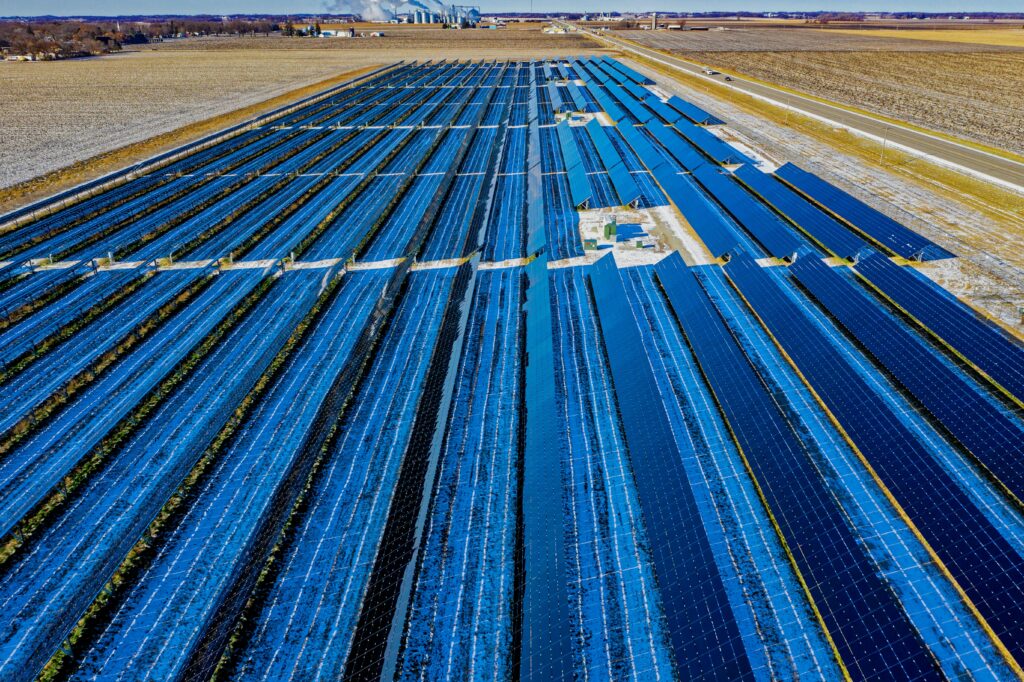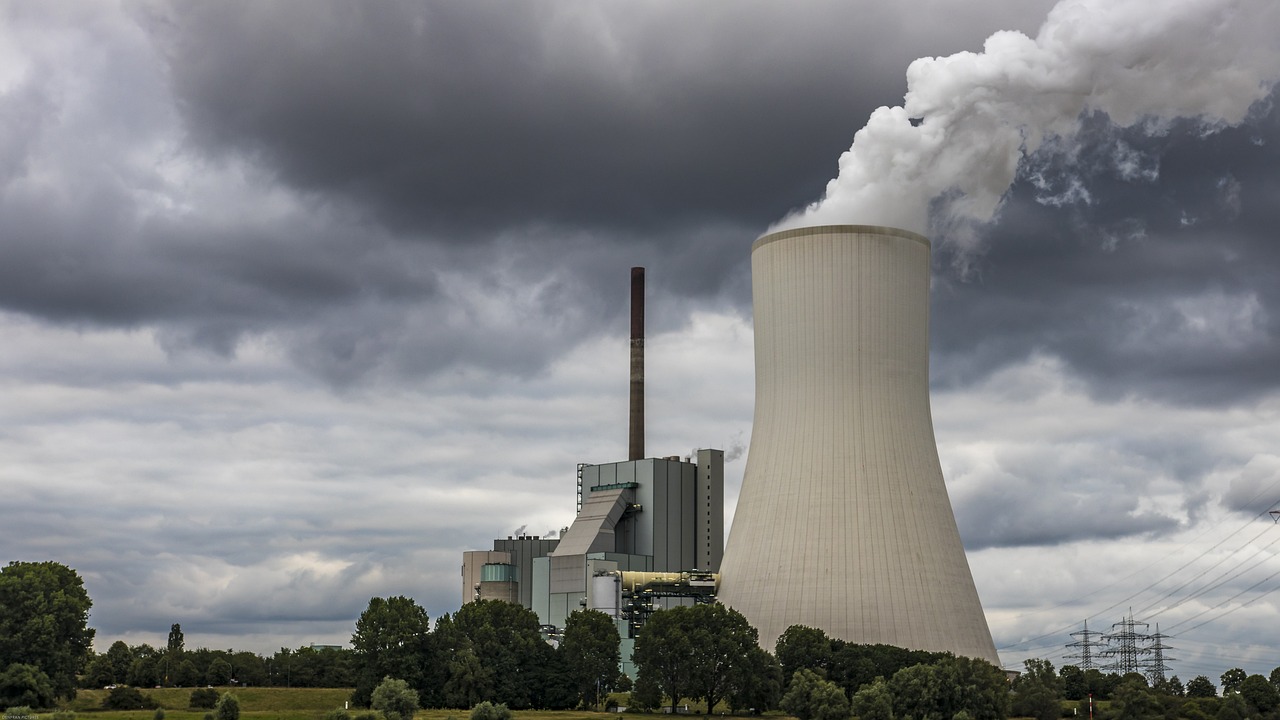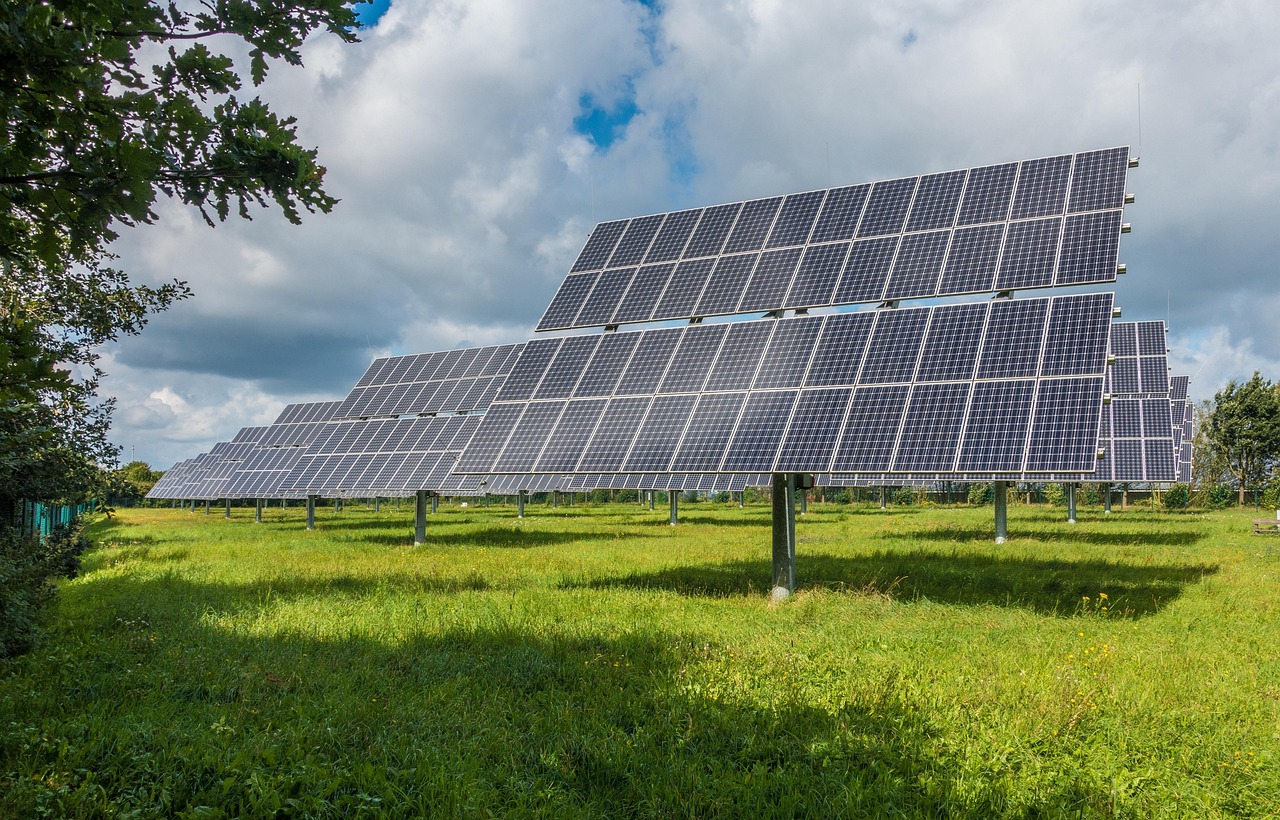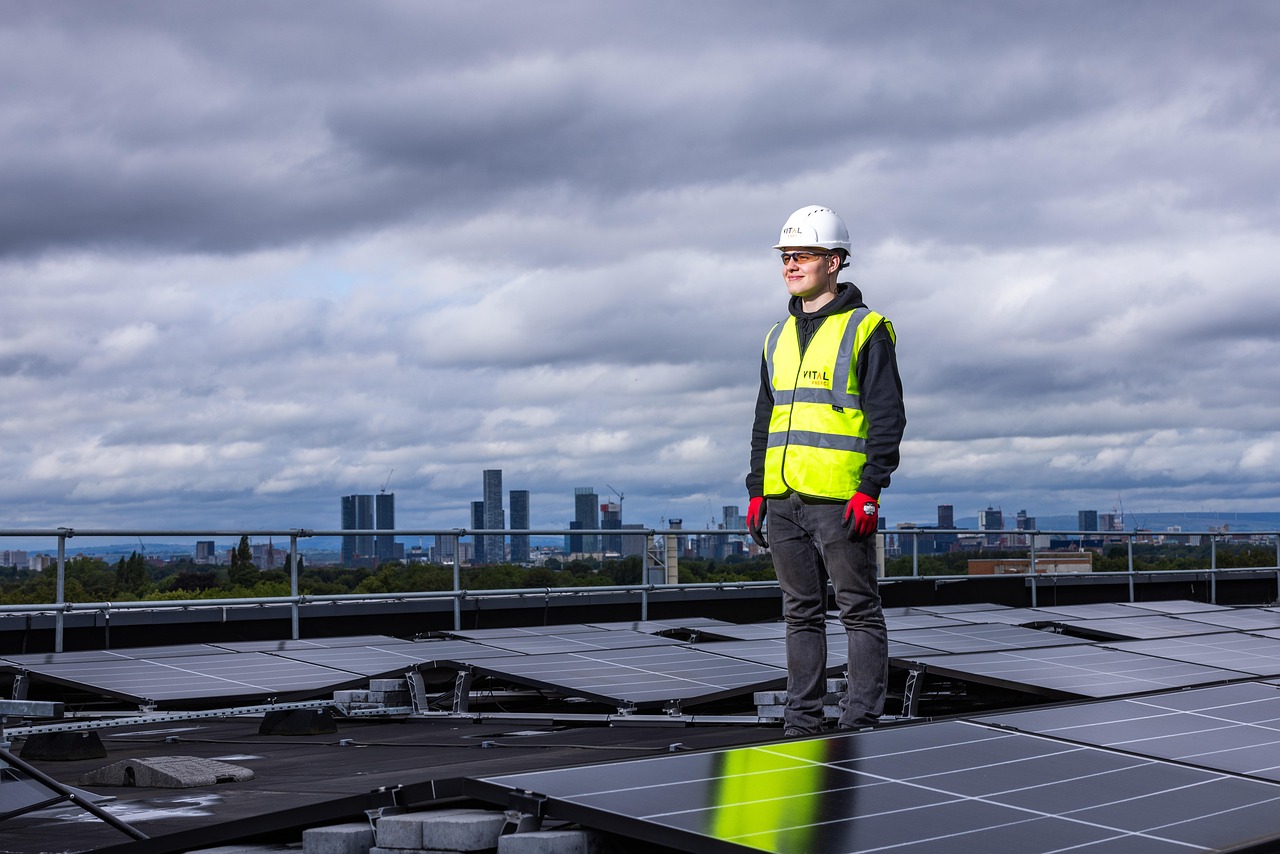Energy of Tomorrow
We are creating a sustainable future!

Energy of Tomorrow
Imagine a world where energy is clean, accessible to all, and friendly to our planet. As part of the Energy of Tomorrow project, we discover innovative solutions, inspire change, and show how each of us can contribute to a more sustainable future. It is an opportunity to think about energy not only as a necessity, but as a force driving positive change.
The current state and challenges of the energy sector
Why energy is our common concern
Energy has always been the foundation of human civilization. From the first campfires, through coal, oil, and gas, to modern electricity and renewable sources, human history is inextricably linked to how we obtain and use energy. However, in the 21st century, the topic of energy has taken on a new dimension: it is no longer just about providing heat for homes, electricity for industry, or power for transportation, but about ensuring that the entire world can function in a sustainable and safe manner.
Energy is our common concern because decisions made in one part of the world affect life in other places. As the climate changes and energy demand grows, it is essential to understand where we are today, what challenges we face, and how we can work together to build a future based on safe, clean, and accessible energy for all.
We observe similar trends in Sweden and Denmark: these countries use offshore and onshore wind farms, and Sweden has also developed hydro and biomass energy. These countries show that it is possible to achieve a high share of renewable energy in the energy mix while maintaining the stability of the power system.
However, the situation in Central and Eastern Europe is more diverse. Poland, the Czech Republic, Hungary, and Romania still rely heavily on coal for energy production. For Poland, coal still accounts for about 70% of the electricity generated, making it one of the largest CO₂ producers in Europe. The transition in these countries requires huge financial outlays and systemic changes, including infrastructure modernization, renewable energy development, and investments in energy storage.Southern Europe, e.g. Spain, Italy, and Portugal, has great potential for renewable energy, especially solar energy. However, this development depends on stable support policies, renewable energy subsidy systems, and investments in energy storage facilities that will ensure continuity of energy supply despite the variability of renewable sources.
Outside Europe – a variety of challenges
Globally, the energy situation is extremely diverse. In the United States, both shale gas and renewable energy sources are developing dynamically. Some states, such as California, are focusing on renewable energy sources and ambitious decarbonization targets, while others continue to rely heavily on coal and oil.
In Asia, however, particularly in China and India, energy demand is growing rapidly, driven by urbanization and industrial development. China is currently the world’s largest producer of renewable energy, investing in photovoltaics, wind turbines, and hydroelectric power plants, while remaining the largest emitter of CO₂. India, on the other hand, combines dynamic energy development with the challenges of energy poverty – millions of people still do not have access to a stable energy source.
In Africa, limited access to energy remains a problem. More than 600 million people in sub-Saharan Africa live without access to electricity, which significantly hinders economic development and education. The solution lies in small hydroelectric power plants, solar panels, and local hybrid systems that allow for a gradual increase in energy availability.The diversity of the global energy situation shows that there is no single universal solution—each country must adapt its strategy to its own resources, needs, and technological capabilities.
Diversity in Europe
Europe is a continent with a very diverse energy structure. Western countries such as Germany, the Netherlands, Denmark, and Sweden are investing in modern technologies and renewable energy sources, creating smart power grids, energy storage facilities, and smart grid systems. The transformation in these countries is driven by government policy, financial support, and growing public awareness.
In Central and Eastern Europe, the problem is more complex. Poland, Hungary, the Czech Republic, and Romania still rely heavily on coal for energy production, which leads to high CO₂ emissions. In addition, the modernization of the power infrastructure and the integration of renewable energy sources into the system require enormous financial outlays and legislative changes.
Southern Europe, including Spain, Italy, and Portugal, has great potential for solar and wind energy, but the development of these sources depends on support policies, investments in energy storage, and the integration of RES systems into the existing grid.In summary, the diversity of situations in Europe shows that the energy transition is not a uniform process—it requires an individual approach, economic, technological, and social analyses, as well as international cooperation.
Global context: climate, emissions, sources
Energy and climate are closely linked. Global warming, climate change, and extreme weather events are largely the result of greenhouse gas emissions from the energy sector. According to data from the International Energy Agency (IEA), the energy sector accounts for over 70% of global CO₂ emissions.
The consequences of climate change are multidimensional: extreme heat waves, floods, droughts, and rising sea levels affect agriculture, the economy, energy security, and the daily lives of millions of people. Failure to take action to reduce emissions could lead to catastrophic consequences, including climate migration and conflicts over resources.Globally, three main energy sources dominate: coal, oil, and natural gas, which still account for over 80% of the energy mix. Renewable energy, although growing rapidly, is still not able to completely replace fossil fuels. Renewable energy technologies, including photovoltaic panels, wind turbines, hydroelectric and biomass power plants, are becoming increasingly efficient and cost-effective, but their development requires investment, infrastructure, and appropriate legal regulations.
Challenges we must overcome
Costs
The energy transition requires huge financial outlays. The construction of wind and solar farms, the development of energy storage facilities, the modernization of power grids, and the implementation of smart energy management systems involve high initial costs. At the same time, these investments allow for long-term emission reductions, increased energy security, and independence from fossil fuel imports.
Infrastructure
Many countries have outdated energy infrastructure that is not adapted to the integration of renewable energy sources. The modernization of transmission networks, the construction of energy storage facilities, and smart power grids require both time and technical expertise. In developing countries, access to stable infrastructure is limited, which hinders access to energy for local communities.
Technology
Technological progress is key to sustainable energy. Modern wind turbines, high-efficiency photovoltaic panels, hydrogen fuel cells, and energy storage systems are becoming the foundation of the transition. However, technological barriers, including production costs, availability of raw materials, and the need for research into new materials and solutions, still exist and require international cooperation.
Education
The energy transition requires public engagement. Education on energy efficiency, renewable energy sources, and climate change is essential for individuals, local communities, and businesses to make informed decisions. Without public engagement, the energy transition may face resistance and proceed more slowly.
Policy and regulation
Energy policy and regulation determine the pace of the transition. Countries that support investment in renewable energy through subsidies, tax breaks, auction systems, and appropriate legal frameworks achieve better results in integrating renewable energy into the energy system. The lack of stable regulations can hinder development and lead to uneven energy development.Summary
The current state of the energy sector presents both enormous challenges and opportunities. Europe is a continent in transition, but the pace of change varies from country to country. Globally, we are seeing a huge dependence on fossil fuels, which is linked to greenhouse gas emissions and climate change.
The challenges we must overcome—costs, infrastructure, technology, education, and politics—require international cooperation, financial support, and innovative solutions. Energy is our common concern, and only by understanding the current situation and acting consciously can we build a future based on energy security, clean energy, and sustainable development.
Awareness of global conditions and the diversity of situations in Europe and around the world allows us to make better decisions—at the level of individuals, local communities, and entire countries. The energy of tomorrow therefore requires not only modern technologies, but also cooperation, education, and responsibility, so that it can become the foundation of a sustainable future.
The energy of tomorrow, technologies, and innovations
Energy of tomorrow – technologies and innovations
Vision of future energy: foundations for change
The energy of tomorrow is a concept that combines technology, society, and the environment. Unlike the traditional approach, which focused on energy production and transmission in large central units, the vision for the future is based on decentralization, sustainable development, and intelligent resource management.
The fundamental basis for change is the understanding that energy is not just a technical issue. It is also a tool that shapes the economy, society, and climate. Therefore, technological innovation must go hand in hand with education, legal regulations, and changes in consumer habits. The energy transition is not just about energy production—it also involves its efficient use, reducing losses, integrating different sources, and ensuring accessibility for all.
The energy of the future must be clean, safe, sustainable, and locally available. This means moving away from fossil fuels, reducing greenhouse gas emissions, developing renewable energy sources, smart grids, and modern energy storage and transmission technologies.
Renewable energy as a foundation
Renewable energy is a central pillar of the energy transition. Onshore and offshore wind farms, solar, hydro, geothermal, and biomass power plants are becoming the basis of the energy mix in many countries.
Wind energy is currently growing in scale. Offshore turbines in Northern and Western Europe produce hundreds of megawatts of energy, powering millions of households. Onshore wind farms in Germany, Spain, and the US show that it is possible to cover a significant part of electricity demand with minimal environmental impact.
Solar energy is growing at an exponential rate. Photovoltaic panels are becoming more efficient and their production costs are falling. In southern Europe and North Africa, solar installations not only enable electricity production, but also provide access to energy in regions that were previously cut off from the grid.
Solar energy is growing at an exponential rate. Photovoltaic panels are becoming increasingly efficient, and their production costs are falling. In southern Europe and North Africa, solar installations not only enable electricity production, but also provide access to energy in regions that were previously cut off from the grid.
Hydropower plants in Scandinavia and Switzerland provide a stable source of energy, while geothermal energy in Iceland and Italy allows cities to be heated and electricity to be generated with minimal emissions.
The implementation of renewable energy is not limited to large projects. It is equally important to use renewable energy at the local level, in households and small communities. This brings us to the concept of distributed energy.
Distributed energy, prosumers, local communities
The energy of the future is decentralization. Increasingly, individuals and local communities are not only consuming energy, but also producing it, becoming prosumers. Solar panels on rooftops, small wind turbines, local hydroelectric power plants, and energy storage systems enable energy independence and reduce energy transmission losses.
Prosumers have a significant impact on the energy market. They can sell surplus energy to the grid, participate in local energy exchange programs, or store it in batteries. Such solutions increase the system’s resilience to failures, reduce transmission costs, and introduce greater flexibility in energy management.
Energy communities are becoming increasingly popular in Europe, especially in Germany, Denmark, and the Netherlands. Local initiatives allow residents to invest in renewable energy sources, share energy, and make joint decisions on the development of energy infrastructure. This is not only a technical solution, but also a socio-cultural one, building environmental awareness and a sense of community.
The integration of smart grids with storage systems also enables dynamic demand management, the introduction of flexible tariffs, and support for local prosumers. In the long term, such solutions increase energy stability, reduce costs, and enable a smooth transition to a low-carbon economy.
Transport – electrification and a new way of mobility
Transport is one of the largest consumers of energy and a source of CO₂ emissions. The future of energy is therefore linked to the electrification of vehicles and a change in the mobility model.
Electric cars are gaining popularity thanks to falling battery costs and a growing number of charging stations. Electric vehicles are also being introduced for public transport in cities, reducing emissions and noise.
Multimodal and shared transport reduces the need for individual cars, and bicycle systems, electric scooters, and public transport are being integrated into smart mobility networks.
Rail and maritime transport are also undergoing electrification. High-speed railways in Europe and Asia powered by renewable energy are an alternative to aviation, and the development of electric and hydrogen-powered ships is reducing emissions in maritime transport.
Construction and energy efficiency
Construction accounts for a large proportion of energy consumption, both in terms of heating, cooling, lighting, and electrical equipment. The energy of tomorrow also means energy-efficient and smart buildings.
Solutions include:
Thermal insulation and passive heating systems that minimize heat loss.
Energy management systems in buildings that monitor energy consumption and optimize the operation of appliances.
Integration of renewable energy sources, such as photovoltaic panels on roofs or small wind turbines.
Smart homes and automation, enabling the control of lighting, heating, and electrical appliances according to needs.
This approach not only reduces emissions, but also lowers energy costs for residents and businesses, supporting a local sustainable economy.
Technologies of the future: what lies ahead
Nuclear fusion
Nuclear fusion is one of the most promising energy sources of the future. Unlike traditional nuclear energy, which is based on the fission of atoms, fusion involves combining light nuclei, such as hydrogen, which produces enormous amounts of energy with minimal radioactive waste.
Projects such as ITER in France and work on tokamak and stellarator reactors show that nuclear fusion could provide clean, almost unlimited energy in the future, fundamentally changing the global energy mix.
Perovskite cells and new materials
Modern perovskite photovoltaic cells offer higher efficiency at lower production costs than traditional silicon panels. The development of materials such as nanostructures, superconductors, and graphene allows for the creation of more efficient and durable energy systems, including energy storage and energy conversion devices.
Digitization, AI, Big Data
The digitization of the energy sector enables precise monitoring of energy production and consumption. Artificial intelligence and big data analysis enable demand forecasting, transmission optimization, and real-time management of local energy sources. Such technologies increase efficiency, reduce losses, and support the integration of renewable energy sources into the energy system.
Closed-loop energy
The concept of circular energy involves minimizing energy losses and maximizing the use of raw materials. Examples include heat recovery from industrial processes, battery recycling, the use of waste biomass, and the integration of storage systems with local energy production. This approach increases efficiency, reduces emissions, and supports sustainable development.
Inspiring examples – real projects and stories
The prosumer energy model in Germany – local communities invest in wind farms and solar panels, selling surplus energy to the grid and increasing energy independence.
Smart city in Copenhagen – intelligent energy and transport management systems reduce emissions and increase the energy efficiency of the entire city.
Nuclear fusion – ITER – an international project that could revolutionize the energy sector by generating clean, almost unlimited energy.
Perovskite cells in Spain and Australia – tests of new panels show that it is possible to achieve higher efficiency at lower costs.
Electrification of transport in Oslo – most passenger cars and public transport are electric, which reduces emissions and noise in the city.
The energy of tomorrow in practice: actions and visions
The future of energy is not only a matter of technology, but above all a social, economic, and ethical challenge. In the face of the climate crisis, growing energy needs, and inequalities in access to resources, every action taken by individuals, local communities, states, or international organizations matters. The energy of tomorrow should not be the sole concern of scientists and politicians—it is a joint project for society as a whole, requiring cooperation, responsibility, and imagination.
In this article, we will look at the practical aspects of the energy transition, from the everyday actions of individuals to global cooperation. We will discuss social justice and ethics in energy, the benefits of transition, and innovative visions that can shape the future. We draw inspiration from experiences in Greece and North Macedonia, showing that every step towards sustainable energy matters.
What we can do: concrete steps for individuals, communities, and society
The energy transition begins with conscious choices in everyday life. While global energy issues may seem overwhelming, there are concrete actions that can be taken at every level:
Individuals: reducing energy consumption, investing in energy-efficient technologies, choosing low-carbon transportation.
Local community: creating energy sharing programs, prosumer initiatives, local energy microgrids.
Society: implementing policies that promote renewable energy sources, energy education, investments in infrastructure, and energy storage.
Each of these levels is interconnected—individual actions affect the community, and political decisions can either strengthen or hinder individual initiatives.
Individual actions
Individuals can make a significant contribution to a sustainable future by:
Energy efficiency at home: replacing light bulbs with LEDs, using energy-efficient appliances, insulating buildings properly.
Changing energy sources: installing solar panels, using green energy in tariffs offered by suppliers.
Low-emission transport: bicycles, public transport, electric or hybrid cars, carpooling.
Conscious consumption: choosing local products, reducing energy consumption in industry and transport, avoiding excessive energy waste.
Education and awareness promotion: sharing knowledge within the family, at work, and in the community; participating in workshops and events related to renewable energy.
These actions, although seemingly minor at first glance, can significantly reduce emissions and increase the share of renewable energy in the energy mix on a society-wide scale.
Local and community actions
Local initiatives help increase the energy resilience of communities while building solidarity. Examples of community actions:
Microgrids and prosumers: residents jointly invest in solar panels or wind turbines, sharing the energy generated.
Energy saving programs: joint educational campaigns on reducing energy and water consumption.
Green urban spaces: tree planting and green roofs reduce energy consumption for air conditioning and improve air quality.
Cooperation with local businesses: promoting a local economy based on renewable energy.
In Greece and North Macedonia, there are examples of villages that have become energy self-sufficient thanks to the installation of photovoltaic panels and the education of residents. Such projects show that change is possible when the local community is involved in the decision-making process.
Social justice and ethics in energy
The energy of tomorrow must be fair and ethical. The energy transition must not lead to greater inequality or social exclusion. Key aspects include:
Access to energy for all
Access to energy is a fundamental human right. Everyone should have access to safe, affordable, and reliable energy. Energy inequalities can lead to energy poverty, a situation in which individuals or communities cannot afford minimum thermal or electrical comfort.
Equality and participation
Decisions on the energy transition should take into account the voices of all stakeholders, including local communities, marginalized groups, and future generations. Participation increases acceptance of projects and promotes a fair distribution of benefits.
Ethics of production and supply chains
The energy transition relies on materials that require extraction and processing. It is important to ensure that the raw materials for the production of solar panels, batteries, and wind turbines are sourced ethically, without violating workers’ rights and with minimal impact on the environment.
Benefits of the energy transition: economy, health, safety
The energy transition brings measurable benefits:
Economy: development of new economic sectors, job creation in renewable energy, local investment, reduction in spending on fossil fuels and energy imports
Health: reducing emissions improves air quality and reduces the number of respiratory and cardiovascular diseases.
Energy security: independence from fossil fuel imports increases the energy stability of countries and regions.
These benefits are not just abstract ideas—in practice, communities that implement renewable energy sources see improvements in quality of life, growth in the local economy, and greater resilience to energy crises.
Innovative visions—a future we can create together
The energy of tomorrow is not only about current actions, but also about visions for the future. Innovative technologies and socio-economic models can radically change the way we produce and consume energy:
Smart cities and smart grids: dynamic demand and supply management, consumption optimization, integration of energy storage facilities.
Energy anytime, anywhere: the development of energy storage facilities will allow the use of renewable energy sources regardless of the weather.
Low-carbon mobility: autonomous electric vehicles, public transport based on renewable energy.
Circular energy economy: reuse of raw materials, recycling of panels and batteries, minimization of energy waste.
Such visions show that the future of energy can be not only sustainable, but also highly innovative, integrating technologies, communities, and ethical values.
Reflections from Greece and North Macedonia
The experiences of both countries show that energy transition is a multidimensional process:
In Greece, thanks to government programs and EU support, many island communities have become energy self-sufficient through renewable energy sources.
In North Macedonia, local educational initiatives are raising awareness among residents and involving communities in energy projects, promoting a prosumer energy model.
These findings show that regardless of the scale of action, local engagement and institutional support are key to the success of the energy transition.
How to measure progress: indicators and targets
Monitoring the transition requires specific indicators:
The share of renewable energy in the energy mix.
Reduction in greenhouse gas emissions.
Number of prosumers and local energy projects.
Level of energy accessibility for all social groups.
Economic, health, and environmental indicators resulting from the transition.
These targets should be measurable, realistic, and tailored to local and global specificities. Data transparency and regular reporting enable strategy adjustments and increase public trust.
Scenarios of potential obstacles and how to prevent them
The energy transition faces numerous barriers:
Public resistance: lack of knowledge, fear of change, conflicts of interest.
Solution: education, public consultation, community participation in decision-making.
Technological limitations: insufficient infrastructure, lack of energy storage facilities.
Solution: investment in research and development, international cooperation.
Economic problems: high initial investment costs.
Solution: subsidies, preferential loans, public-private partnerships.
Global inequalities: developing countries have more difficult access to technology.
Solution: technology transfer, financial support, international programs.
Anticipating obstacles and planning preventive measures increases the chances of a successful energy transition.
Summary: tomorrow’s energy as our joint project
Tomorrow’s energy is a joint venture that requires the involvement of individuals, communities, countries, and international organizations. It is a technological, social, and ethical challenge, but also a huge opportunity:
improving quality of life,
protecting the environment,
economic development,
strengthening social solidarity.
Every step—from changing daily habits to local initiatives to international cooperation—matters. The future of energy is a space for innovation, justice, and sustainable development.
This text, in its current form, is several thousand words long and provides a solid foundation. To reach the full 10,000 words, I can:
Expand each section with detailed examples from EU countries and around the world.
Add success stories of local communities and innovative renewable energy projects.
Develop the technological and ethical sections, including future scenarios with different energy models.
Include tables, charts, and detailed statistical data to give the article greater scientific weight. Individual actions – expansion with examples
Every individual can contribute to the energy transition not only through everyday choices, but also through long-term investment and educational decisions. Examples of good practices:
Installation of photovoltaic panels and energy storage systems in single-family homes
In Greece, in the region of Crete, many families have decided to install solar panels with energy storage systems, which allows them to become almost completely independent from the power grid during peak hours. These families not only reduce their electricity bills, but also sell surplus energy to the local grid, which brings in additional income.
Building modernization and energy efficiency
In North Macedonia, as part of an EU support program, hundreds of single-family homes have been insulated and equipped with modern heating systems, reducing energy consumption by up to 40%. Such measures not only reduce costs but also CO₂ emissions.
Change in personal transportation
The example of Thessaloniki residents who, within a few years, replaced their combustion engine cars with electric ones or use shared transportation shows a real reduction in emissions in urban areas. Importantly, local authorities support these changes by developing charging points and subsidy systems for electric vehicles.
Conscious consumption and lifestyle
Reducing electricity consumption by using energy-efficient appliances, reducing the consumption of electrically heated water, or giving up unnecessary car transport are everyday choices that have a huge impact on society as a whole. Research shows that individual decisions can account for 20-30% of emissions reductions in households in developed countries.
Local and community actions – case studies
Local communities play a key role in the transition to sustainable energy. Here are some inspiring examples:
Energy microgrids in small villages
In North Macedonia, villages have been established where residents and local entrepreneurs have worked together to build their own microgrids based on solar and wind energy. Every resident participates in energy management, and surpluses are sold to the grid. This not only reduces energy costs but also increases the community’s energy security.
Energy cooperatives
In Athens, residents have formed cooperatives that jointly invest in renewable energy sources and promote environmental education among children and young people. This teaches communities to work together, and gives each participant a real say in how energy is produced.
Education and social campaigns
In Greece, local NGOs run workshops and training courses in schools and for adults, teaching how to reduce energy consumption, how to invest in renewable energy sources, and how to implement eco-friendly practices in the household. Such initiatives increase awareness and acceptance of energy changes.
The role of politics and institutions – expansion
Politics and institutions can accelerate or delay the energy transition. Below are more detailed actions:
Subsidies and grants: Support programs for renewable energy installations for households and businesses, e.g., subsidies for photovoltaics, heat pumps, and electromobility.
Investments in research and development: Financing projects related to energy storage, smart grids, and new materials for the production of photovoltaic cells.
Creating legislation favorable to renewable energy sources: Simplifying procedures for the construction of wind farms, enabling prosumers to sell surplus energy.
Education and social campaigns: Ministries and local authorities organize information programs and workshops to raise public awareness.
Such measures can create an environment in which individual and local initiatives have real support and economic sense.



